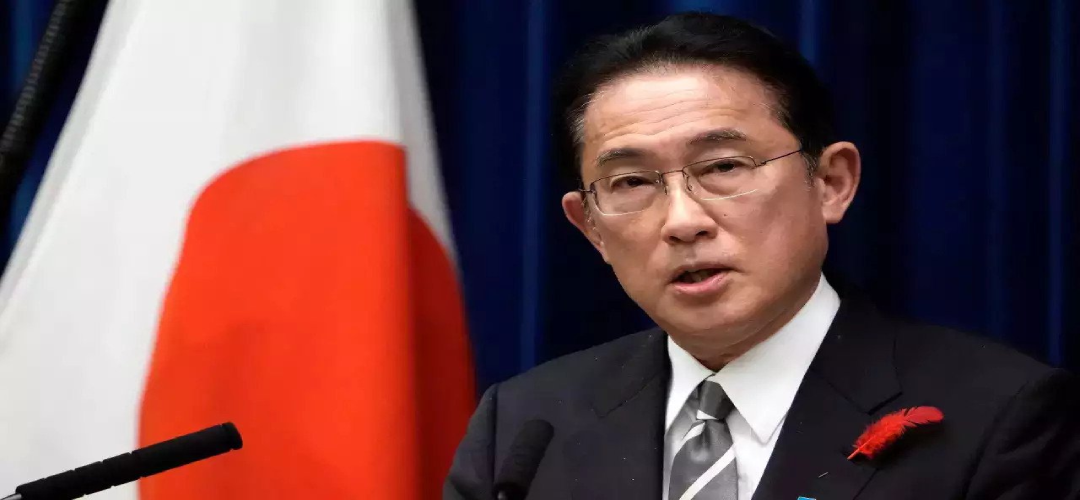Japan’s New Age Capitalism!
September 23, 2023 | Expert Insights

In a special address last year, Japanese Prime Minister Kishida Fumio set forward three priorities for the country: overcoming COVID-19, reviving the Japanese economy through a new capitalism, and adopting a realistic foreign policy. He elaborated that state capitalism without checks and balances leads to several challenges, such as widening income gaps, climate change, and social tensions. He added that Japan would use its G7 presidency in 2023 to demonstrate how capitalism can evolve.
The plan of action for this “new form of capitalism” was put in place soon after Mr Fumio had assumed office last October. However, it has not been easy and only recently, green shoots of the plan have begun to take shape. Put in simplistic terms, the policy aims to increase public and private sector collaboration towards economic and social development instead of allowing market forces to drive the economy, as has been the norm post the reconstruction of Japan after World War II. The emphasis would be both on growth and an equitable distribution of wealth. Sounds utopian but let us wait and watch how it plays out.
Background
Japan’s economy grew rapidly in the decades following World War II. This was based on industrial production, developing its domestic market, and aggressive export trade. Japan developed a diversified manufacturing and services economy and became one of the leading producers of motor vehicles, steel, and high-tech goods – particularly consumer electronics. It peaked in the 1980s with the highest per capita gross national product in the world. The standard of living also rose to a level comparable with developed countries.
In the late 1980s, a loose monetary policy resulted in increased speculation and high stock share and real estate valuations. The bubble burst at the start of the 1990s. In the ensuing economic downturn, Japan entered a decades-long period of economic crisis and stagnation, now called the Lost Decade. Slow growth rates continued right up to the global financial crisis in 2008 and continued till the COVID-19 pandemic in 2020.
Japan’s main economic approach since the 1980s has been a neoliberal one. The currently prevailing economic policy was introduced under the government of former Prime Minister Shinzo Abe, the longest-serving prime minister who served between 2012 and 2020. Known as Abenomics, this policy featured a set of stimulus measures and reforms that were viewed as helping Japan jumpstart out of stagnation and revive growth. It featured a highly easy monetary policy that made it cheaper for consumers and businesses to borrow and spend money. The government pumped money into the economy and provided tax breaks. However, these efforts faced a roadblock when the country went into recession in 2020 with the pandemic. Abenomics has been generally criticised as being welfare for the wealthy.

Analysis
The "new capitalism" strategy is twofold: it seeks to balance economic growth with the distribution of wealth. Economic growth focuses on scientific and technological advancement, reviving Japanese companies, boosting innovation, and digital technology. Growth will be the first priority in order to initiate a cycle of growth and distribution.
Over the years, Japan has increasingly focused on short-term shareholder value, resulting in slow growth of the middle class, growing income disparity, and adverse environmental impact. The new policy would emphasise enhancing mid to long-term earning power by encouraging investments in the future in areas like human capital and sustainability. It would also offer incentives to encourage businesses to distribute profits better through wage increases. However, it is uncertain how effective such incentives will be, given that Abe had adopted a similar policy with little success.
Key aspects of the growth strategy are digital transformation, growth of the green sector, and startups. The government will provide support for startups and innovation and give importance to social innovation to improve productivity in diverse industries and benefit the middle class. The distribution strategy would seek to improve wages and thereby boost consumption, which in turn would improve corporate earnings and growth.
The 2023 revision plan elaborates a more tangible strategy, particularly to improve productivity (a longstanding priority for Japan) through labour market reform. It will focus on improving reskilling opportunities and facilitating labour mobility to allow individuals to move into high-growth sectors, supporting growth. In light of Japan's ageing and declining population and the resulting labour crunch, investing in human resources has become key.
Implementing “new capitalism” will involve diverging from Japan’s longstanding Abenomics. This may face political resistance, particularly in light of another faction within Kishida’s party – the Seiwa Seisaku Kenkyukai, which exerts substantial influence over the party policy. Further, his government also faces the challenge of placating the corporate sector, which may not respond positively to distribution reforms. In other words, a key issue is how to bring about distribution without losing the support of the affluent. The emphasis on distribution may spook businesses and investors.
Assessment
- The new economic policy could offer an alternative to the longstanding Abenomics, which has received widespread criticism without any meaningful alternatives being offered.
- One of the major concerns about the “new capitalism” policy is that it will discourage and hinder growth and investment in its efforts to distribute wealth. Further, bringing about better distribution without losing the support of private businesses and the affluent will be a significant challenge.
- A key problem the “new capitalism” will have to deal with is stagnating wages, which have failed to rise in tandem with shareholder profits. The gender wage gap is another major issue in Japan, and it remains to be seen whether this will be addressed.








Comments